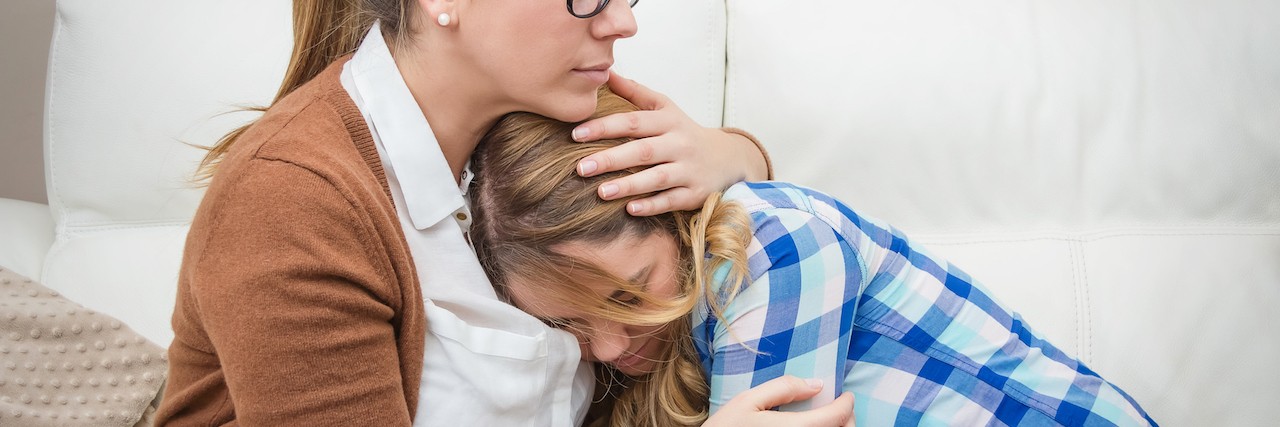To My Mom, Who Took the Time to Understand My Self-Harming Behaviors
Having a child who is going through any mental health problem can’t be easy. I know my mom struggled as she watched me struggling as a teenager. I began to self-harm at age 13, although I had been toying with the idea for a lot longer, and it didn’t take long before my mother saw the results of what I was doing. Parents have a need to protect their children from whatever the world is going to throw at them, but when it comes to self-harm a parent has to ask the question: How do you protect your children from themselves?
My mom didn’t deal with it well at first. She panicked, and she threatened to get rid of anything sharp in the house. She was lost and afraid, she didn’t want me to cause any more damage to myself than I already had, and worried my self-harming meant I was also going to kill myself soon.
But then she began to research; she spoke to a friend of hers whose daughter also self-harmed, and she was able to come, somewhat reluctantly, to terms with it. She sat me down and said it wasn’t what she wanted me to do, but she also knew forcing me to stop or using threats might just make it worse.
Self-harm is becoming a much more prevalent issue now than it was even just 10 years ago. In 2014 in the U.K., figures suggest a 70 percent rise in the amount of 10-14 year olds attending the ER for self-harm related incidents between 2012-2014, and approximately 13 percent of young people may self-harm between 11-16 years old.
My mom really did have to go the extra mile for me, in ways I don’t think she even realized. If I was going through a particularly bad night, her door was open for me to crawl into bed beside her (not that I told anyone this; it was a little embarrassing — a girl needing to sleep beside her mother for comfort at age 16). She would wash the blood out of my bed sheets on a daily basis, and as she was a nurse, would stitch up any open cuts for me to ensure the scarring wasn’t as bad as it could be. I was lucky; this saved me trips to the hospital.
Over time I learned better coping methods. I wish I could say I am completely self-harm free, but that would be a lie. However my cutting has gone down from a daily occurrence to once or twice a year at most. When I was a teenager I hid my arms away behind long sleeves and never wore shorts to reveal the marks on my thighs, but now I wear my scars with no shame. They are a part of me and a part of my story. They are proof I have struggled and possibly continue to struggle, and that’s OK.
For those of you reading this who engage in self-harming behaviors know this; you are not alone, there are so many support websites out there for people going through similar things.
If you are a parent reading this, after finding out your child is self-harming, please do not panic. Self-harming does not necessarily mean suicidal behavior.
People who self-harm do not necessarily want to kill themselves, and they are not attention-seekers either. These are the two biggest and hardest myths to dispel about self-injury. People who self-harm often do it, not because they want to kill themselves, but because they feel numb and want to feel more connected to life. Yes, it is an unhealthy coping mechanism. Some useful alternatives I’ve found over the years are drawing lines on my skin with red pen to show psuedo-cuts, or pinging myself with an elastic band.
I was lucky enough to have an incredibly understanding and supportive mother who was an open door for me to speak to whenever I felt low or had the need to self-harm. She wouldn’t panic or freak out; she would sit back and listen to me when I needed it or help me when I asked for it.
Thank you, Mom, for everything.
If you or someone you know needs help, see our suicide prevention resources.
If you need support right now, call the Suicide Prevention Lifeline at 1-800-273-8255.

